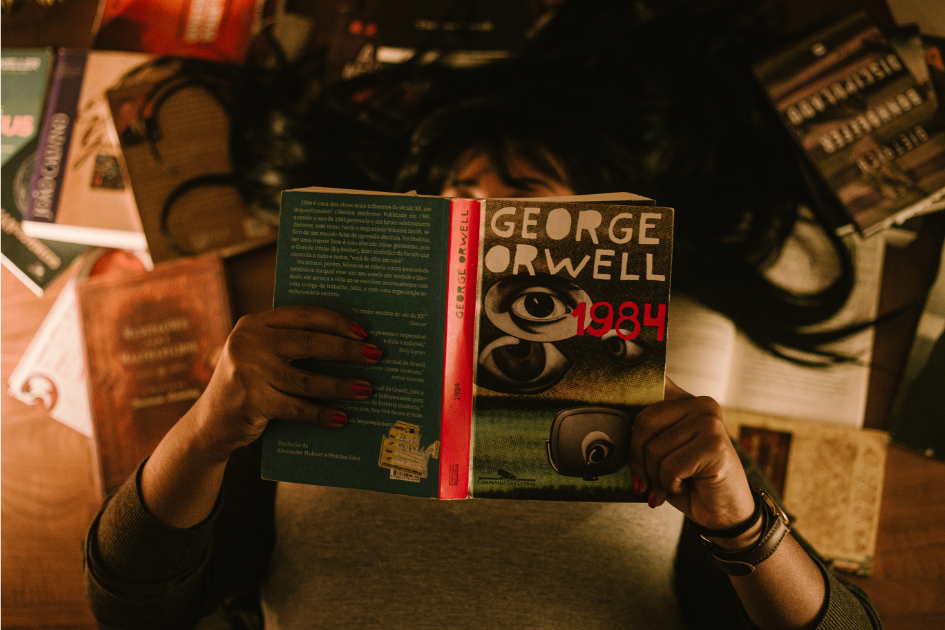Teacher simulates an authoritarian dictatorship in her classroom, but the students fought back
It went along with the students reading "1984."
Students at a protest.
Each year that I teach the book "1984," I turn my classroom into a totalitarian regime under the guise of the "common good." I run a simulation in which I become a dictator. I tell my students that in order to battle "Senioritis," the teachers and admin have adapted an evidence-based strategy, a strategy that has "been implemented in many schools throughout the country and has had immense success." I hang posters with motivational quotes and falsified statistics, and provide a false narrative for the problem that is "Senioritis."
"1984" is a book by George Orwell, written in 1949, about a fictional future where a totalitarian regime watches over everyone, rewrites history, and controls what people think. The book's protagonist, Winston Smith, quietly rebels against the regime in an attempt to regain hope, freedom, and truth. It has become essential reading for students worldwide as a blueprint for recognizing the tactics used by authoritarians.

I tell the students that in order to help them succeed, I must implement strict classroom rules. They must raise their hand before doing anything at all, even when asking another student for a pencil. They lose points each time they don't behave as expected. They gain points by reporting other students. If someone breaks the rule and I don't see it, it's the responsibility of the other students to let me know. Those students earn bonus points. I tell students that in order for this plan to work they must "trust the process and not question their teachers." This becomes a school-wide effort. The other teachers and admin join in.

I've done this experiment numerous times, and each year I have similar results. This year, however, was different.
This year, a handful of students did fall in line as always. The majority of students, however, rebelled.
By day two of the simulation, the students were contacting members of administration, writing letters, and creating protest posters. They were organizing against me and against the admin. They were stomping the hallways, refusing to do as they were told.
The president of the Student Government Association, whom I don't even teach, wrote an email demanding an end to this "program." He wrote that this program is "simply fascism at its worst. Statements such as these are the base of a dictatorship rule, this school, as well as this country cannot and will not fall prey to these totalitarian behaviors."
I did everything in my power to fight their rebellion.

I "bribed" the president of the SGA. I "forced" him to publicly "resign." And, yet, the students did not back down. They fought even harder. They were more vigilant. They became more organized. They found a new leader. They were more than ready to fight. They knew they would win in numbers.
I ended the experiment two days earlier than I had planned because their rebellion was so strong and overwhelming. For the first time since I've done this experiment, the students "won."
What I learned is this: Teenagers will be the ones to save us.

Just like Emma Gonzalez, the teen activist from Marjory Stoneman Douglas, my students did not back down nor conform. They fought for their rights. They won.
Adults can learn a lot from the teens of this generation. Adults are complacent, jaded, and disparaged. Teenagers are ignited, spirited, and take no prisoners. Do not squander their fight. They really are our future. Do not call them entitled. That entitlement is their drive and their passion. Do not get in their way. They will crush you.
Foster their rebellion. They are our best allies.
This story originally appeared on Medium and is reprinted here with permission. It was originally published seven years ago.
